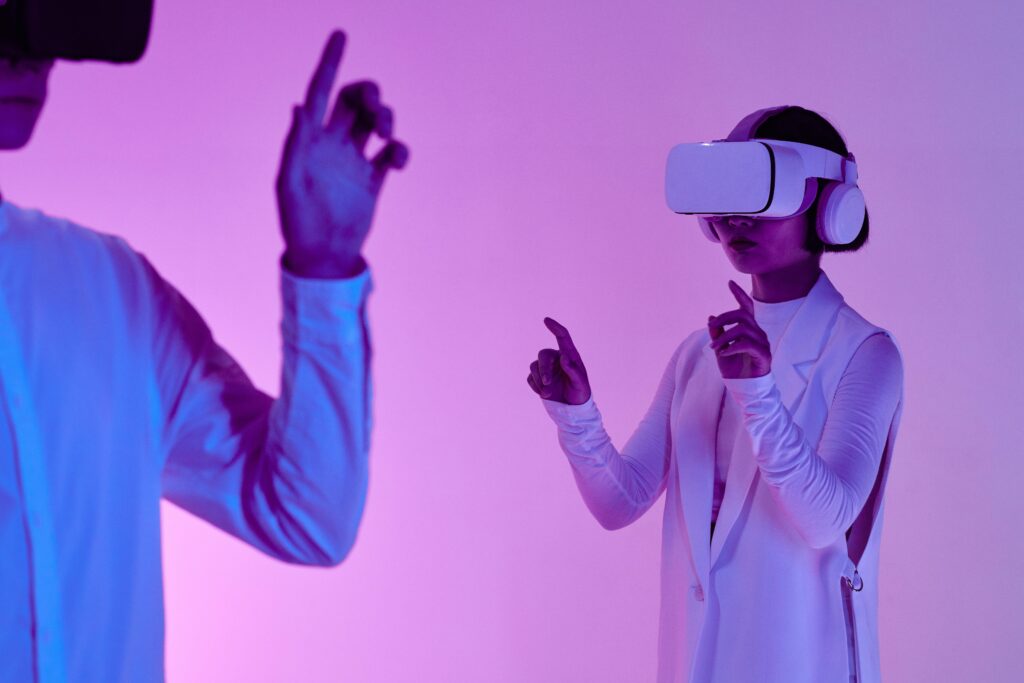Contents
- 1 The Future is Here: AI Can Profile People from Their Head Vibrations
- 2 Ai profile people from thier head vibrations intro
- 3 Understanding Head Vibrations and AI’s Role
- 4 The Science Behind Profiling with Head Vibrations
- 5 Real-World Applications of AI Profiling
- 6 Advancements in Technology Supporting AI Profiling
- 7 Ethical Considerations and Privacy Concerns
- 8 The Future of AI Profiling
- 9 ‘AI’ is being used to profile people from their head vibrations but is there enough evidence to support it?
- 10 HOW AI USES MICRO VIBRATIONS ON THE FACE TO DETECT EMOTIONS?
- 11 Does AI contain an inbuilt system for remote neural monitoring?
The Future is Here: AI Can Profile People from Their Head Vibrations
Ai profile people from thier head vibrations intro
Technology has been advancing at an astonishing pace, and with each new development, we are constantly amazed by what it can do. One of the latest breakthroughs in the world of ai profile people from their head vibrations. Yes, you read that right. AI can now analyze and interpret the tiny vibrations emanating from our heads to create a detailed profile of an individual.
This technology has immense potential and could revolutionize the way we understand and interact with others. It may sound like something out of a sci-fi movie, but this is a reality that is already here. In this blog post, we will explore how AI can profile people from their head vibrations and what this could mean for the future.
Understanding Head Vibrations and AI’s Role
At its core, the ability of AI to profile people from their head vibrations relies on sophisticated sensors and advanced algorithms. These head vibrations, though imperceptible to humans, carry a wealth of information. Each individual’s vibrations are unique, much like a fingerprint, and can tell us about their health, emotional state, and possibly even their thought processes.
AI steps in to analyze these vibrations, utilizing machine learning to identify patterns and nuances that are too complex for the human brain to decipher. The role of AI here is twofold: first, to accurately capture these vibrations using non-invasive methods, and second, to process this data at an unprecedented speed and with a level of detail previously unattainable.
By doing so, AI opens up new possibilities in understanding human physiology and psychology from a completely new angle. As we continue to harness the power of AI, profiling people from their head vibrations could become a common practice in fields ranging from healthcare to security, offering insights that were once thought to be beyond our reach.
The Science Behind Profiling with Head Vibrations
The intriguing science that enables AI to profile individuals based on their head vibrations stems from the understanding that every human being emits a unique pattern of vibrations. These vibrations, generated by the micro-movements of our skulls and possibly influenced by neural activity, create a sort of “vibration signature.” Scientists have developed highly sensitive equipment capable of detecting and recording these minute vibrations.
Once captured, the real magic happens in the analysis phase. Using complex algorithms, AI sifts through the data, looking for specific patterns that correlate with certain psychological or physiological states. For instance, variations in vibration patterns could indicate stress levels, emotional states, or even certain cognitive processes. The foundational principle is that our brain and body activities manifest in subtle but measurable ways, offering a new window into the human condition.
This process doesn’t just scratch the surface; it goes deeper, potentially revealing aspects of our health and minds that are not visible through conventional means. The specificity with which AI can analyze these vibrations is what makes this technology so revolutionary, pushing the boundaries of how we understand and interpret human behavior and biology.
Real-World Applications of AI Profiling
The real-world applications of AI profiling using head vibrations are vast and varied, spanning numerous fields. In healthcare, this technology could offer non-invasive methods for diagnosing and monitoring neurological conditions, mental health states, and even early signs of diseases by detecting minute physiological changes. Security sectors could utilize it for identity verification processes, potentially adding a layer of biometric security that is difficult to forge or manipulate.
In the realm of personalized advertising and customer service, understanding an individual’s emotional state could allow companies to tailor their approaches in real-time, enhancing user experience. Educational settings might benefit from detecting students’ concentration levels and adjusting teaching methods accordingly.
Furthermore, this technology could play a crucial role in enhancing user interfaces for the differently-abled, by interpreting head vibrations as commands for various devices and software. Each of these applications not only showcases the versatility of AI in profiling based on head vibrations but also hints at the profound impact this technology could have on society, streamlining processes, and opening new avenues for understanding and interacting with the world around us.
Advancements in Technology Supporting AI Profiling
The evolution of technology enabling AI to profile people from their head vibrations is marked by significant advancements in sensor technology and machine learning algorithms. Modern sensors have become increasingly sensitive, capable of capturing the faintest vibrations emitted by the human skull. These advancements have paved the way for collecting high-fidelity data, essential for creating accurate profiles.
Concurrently, machine learning algorithms have evolved to analyze this complex data more efficiently and with greater accuracy. These algorithms can now dissect the intricate patterns within head vibrations, discerning subtle differences that distinguish one individual from another. Additionally, the integration of big data analytics allows for the processing of vast amounts of information in real-time, further enhancing the AI’s ability to profile with precision.
The intersection of improved hardware for data collection and sophisticated software for data analysis forms the backbone of this revolutionary technology. As these technological elements continue to advance, the capacity for AI to profile individuals based on head vibrations will only become more refined, opening new frontiers in personalized medicine, security, and beyond.
Ethical Considerations and Privacy Concerns
As the technology enabling AI to profile people from their head vibrations progresses, it raises significant ethical considerations and privacy concerns. The potential for misuse of this sensitive information is a pressing issue. Without stringent safeguards, the data collected could be exploited, leading to unprecedented invasions of privacy. Individuals may be profiled without their consent, or knowledge, turning personal vibrations into data points that could be misused for surveillance, discrimination, or commercial gain.
The ability of AI to decipher personal characteristics, health status, or emotional states from mere vibrations calls for a critical examination of how this technology is deployed and regulated. Ensuring transparency in how data is collected, used, and protected is vital. Moreover, there must be clear guidelines on consent, giving individuals control over their own vibrational data. Addressing these ethical considerations and privacy concerns is paramount to fostering trust and ensuring that the use of AI to profile people from their head vibrations benefits society while respecting individual rights and dignity.
The Future of AI Profiling
The horizon for AI profiling using head vibrations is expansive and promises a fusion of innovation with everyday life. As technology evolves, the ability of AI profile people from their head vibrations will become more integrated into various sectors, offering more personalized and efficient services. The future may see this groundbreaking approach becoming a staple in medical diagnostics, where early detection of diseases through vibration patterns could save lives.
Moreover, the advancement could lead to enhanced security systems that are more robust against fraud. Educational tools might adapt to the cognitive states of students, providing a more tailored learning experience. However, the journey ahead also emphasizes the importance of ethical AI development.
Ensuring that advancements in profiling technologies enhance societal wellbeing without compromising privacy or autonomy will be crucial. As we stand on the brink of this new era, the promise of AI to profile individuals in such a unique way invites both excitement and responsibility, paving the way for a future where technology and humanity intersect more intimately than ever before.

‘AI’ is being used to profile people from their head vibrations but is there enough evidence to support it?
At the heart of this controversial method lies the premise that AI can analyze and interpret the subtle vibrations produced by a person’s head to infer characteristics or states of being. This concept is rooted in biomechanics, suggesting that every individual’s head vibrates in unique patterns due to various physiological factors, such as bone density, muscle tension, and even neural activity.
By employing sophisticated algorithms, AI aims to decode these patterns, likening the process to a highly advanced form of biometric analysis. However, the science of head vibration profiling is still in its nascent stages. Critics argue that there isn’t enough evidence to support the reliability and validity of using head vibrations as a means to accurately profile people. The complexity of human biology and the subtlety of these vibrations pose significant challenges.
AI, despite its advanced capabilities, must contend with an immense array of variables. This includes environmental factors that could alter head vibrations, such as temperature and humidity, making it difficult to ensure consistent and accurate readings.
As intriguing as the concept may be, the practical application of using AI to profile people based on head vibrations demands a deeper, more rigorous body of research to substantiate its claims. The promise of such technology sparks a fascinating debate on the future of biometric profiling, yet the current lack of enough evidence calls for a cautious approach towards its development and use.
HOW AI USES MICRO VIBRATIONS ON THE FACE TO DETECT EMOTIONS?
Facial micro vibrations are subtle, involuntary movements of the facial muscles that occur as a response to internal emotions. These micro-movements are often imperceptible to the human eye but can reveal a wealth of information about a person’s emotional state. AI uses micro vibrations on the face to detect emotions by employing sophisticated algorithms and sensor technologies that can analyze these minute facial changes with remarkable accuracy.
The premise is that every emotion, from joy to sadness, anger to surprise, triggers a unique pattern of micro vibrations on the face. By decoding these patterns, AI systems can interpret an individual’s emotional state in real-time. This capability is grounded in the science of biomechanics and psychology, merging to form an advanced method of understanding human emotions without the need for verbal communication.
As AI continues to evolve, its ability to use micro vibrations to detect emotions is opening up new possibilities in fields ranging from mental health assessment to enhanced user experiences in technology.


